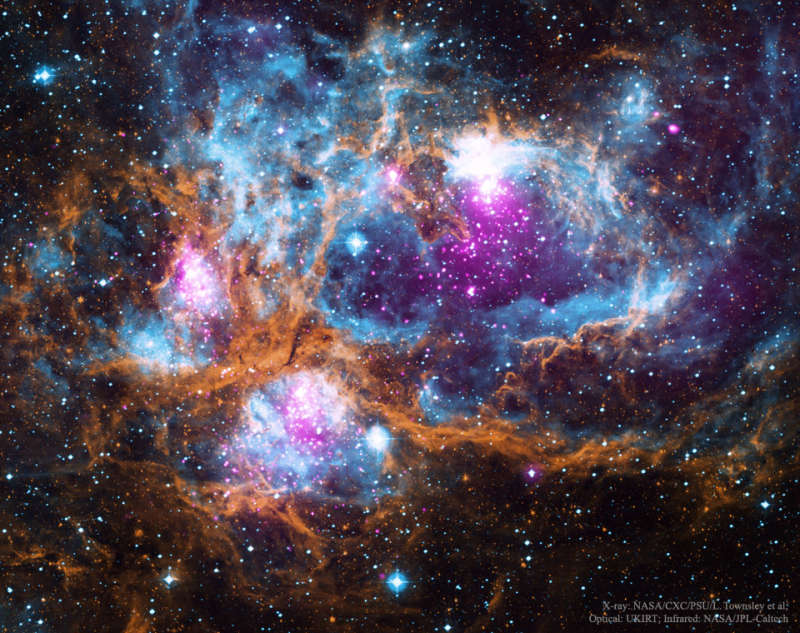Credit & Copyright: X-ray: NASA/CXC/PSU/L. Townsley et al; Optical: UKIRT;
Infrared: NASA/JPL-Caltech
Explanation:
For reasons unknown, NGC 6357 is forming some of the most massive stars ever discovered.
This complex wonderland of star formation consists
of numerous filaments of dust and gas surrounding huge cavities of
massive star clusters.
The intricate patterns are caused by complex interactions between interstellar
winds, radiation pressures,
magnetic fields, and gravity.
The featured image includes
not only visible light taken by the
UKIRT Telescope in Hawaii (blue) as part
of the
SuperCosmos Sky Surveys,
but infrared light from
NASA's orbiting
Spitzer Space Telescope (orange) and
X-ray light from
NASA's orbiting
Chandra X-ray Observatory (pink).
NGC 6357 spans about 100
light years and lies about 5,500 light years away toward the
constellation of the Scorpion.
Within 10 million years, the most massive stars currently seen in NGC 6357
will have exploded.
1999 2000 2001 2002 2003 2004 2005 2006 2007 2008 2009 2010 2011 2012 2013 2014 2015 2016 2017 2018 2019 2020 2021 2022 2023 2024 2025 |
Январь Февраль Март Апрель Май Июнь Июль Август Сентябрь Октябрь Ноябрь Декабрь |
NASA Web Site Statements, Warnings, and Disclaimers
NASA Official: Jay Norris. Specific rights apply.
A service of: LHEA at NASA / GSFC
& Michigan Tech. U.
|
Публикации с ключевыми словами:
star cluster - star formation - звездообразование - звездное скопление
Публикации со словами: star cluster - star formation - звездообразование - звездное скопление | |
См. также:
Все публикации на ту же тему >> | |
